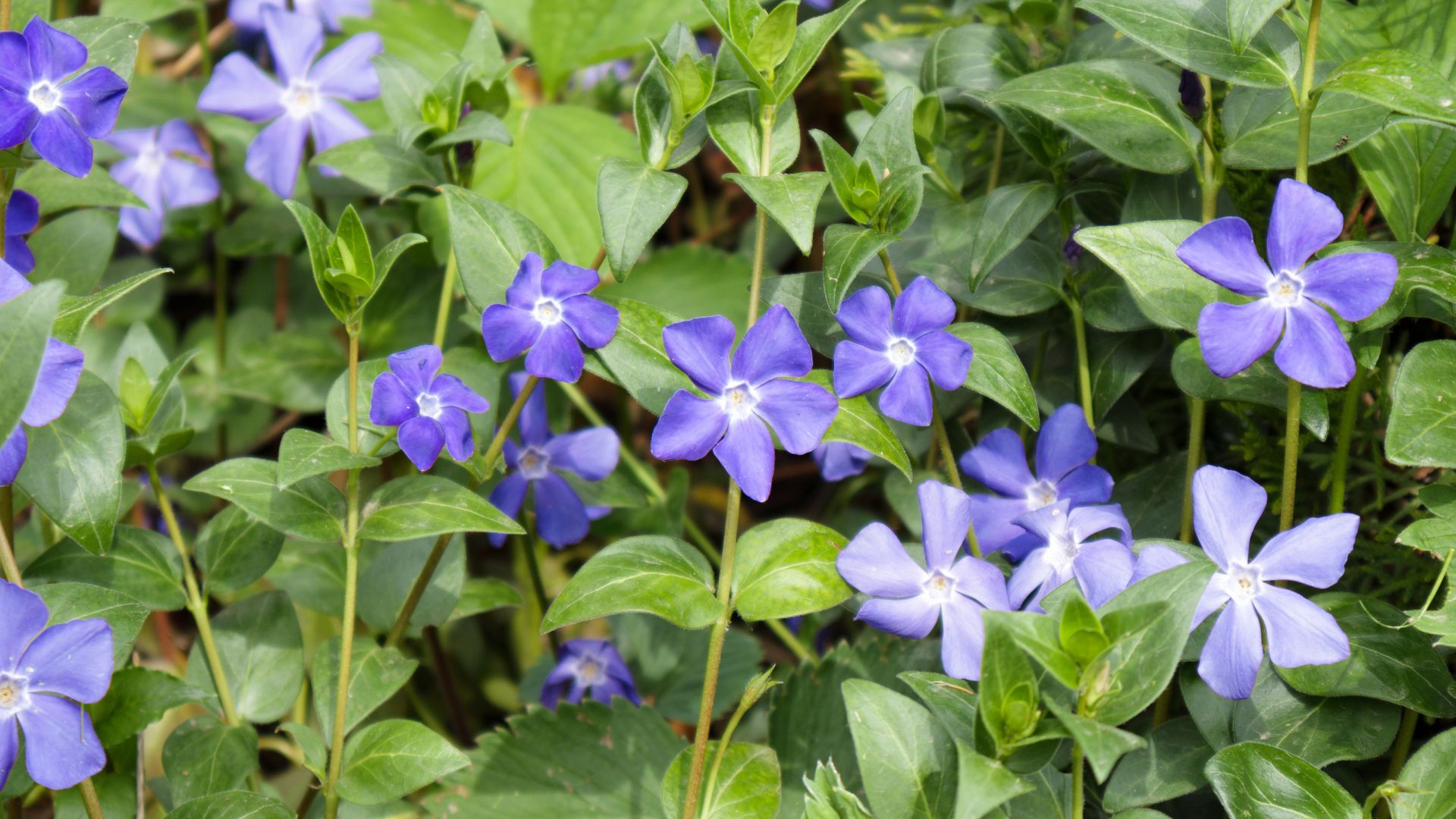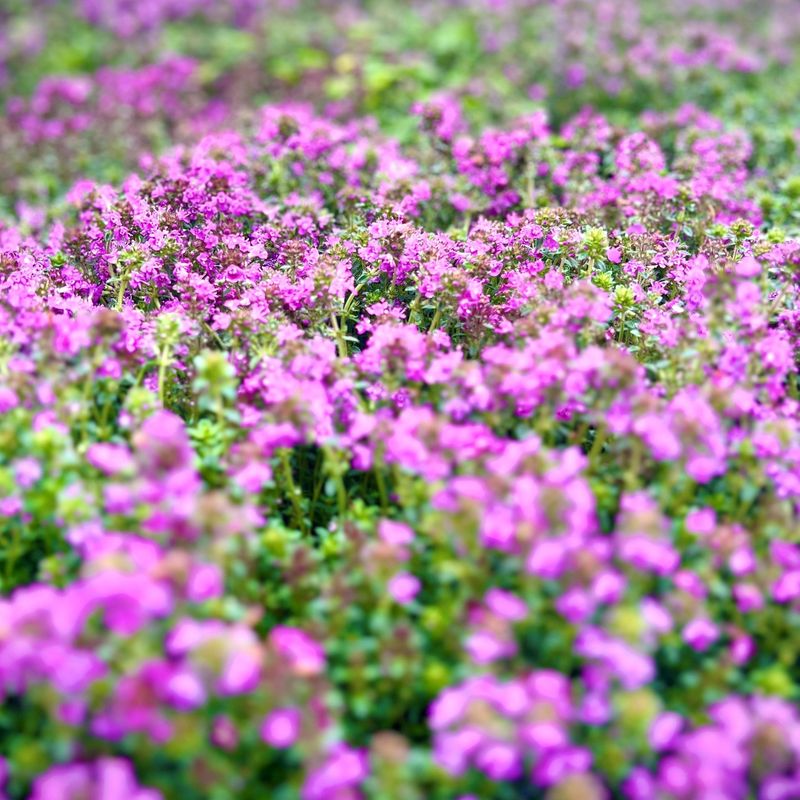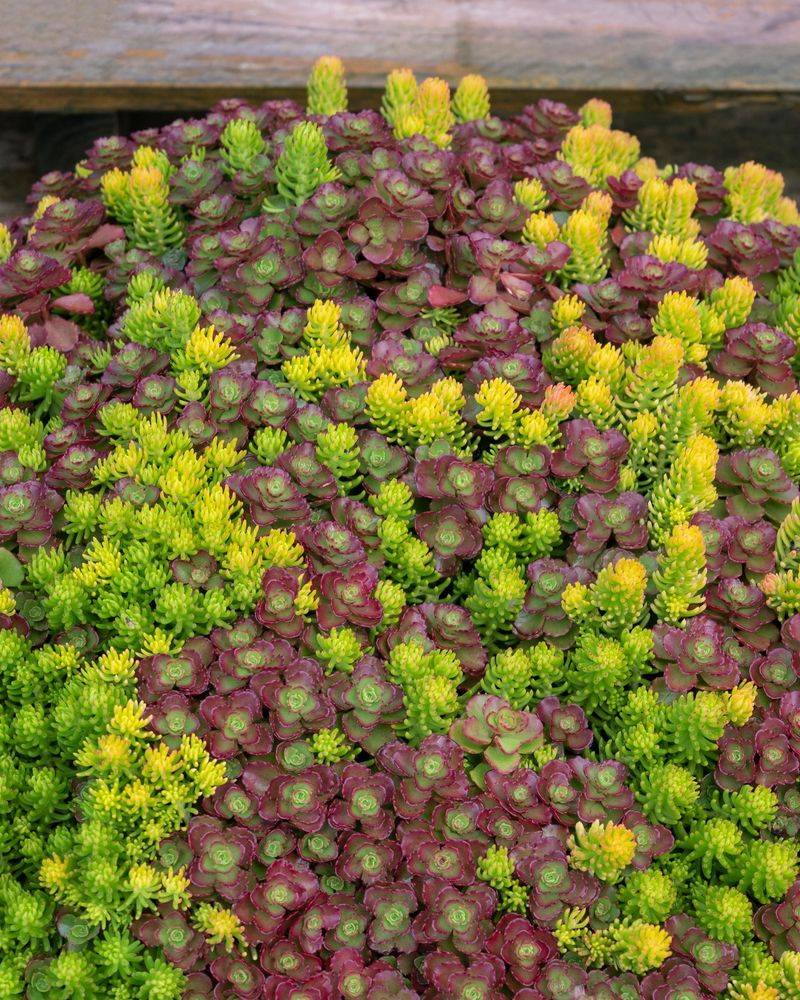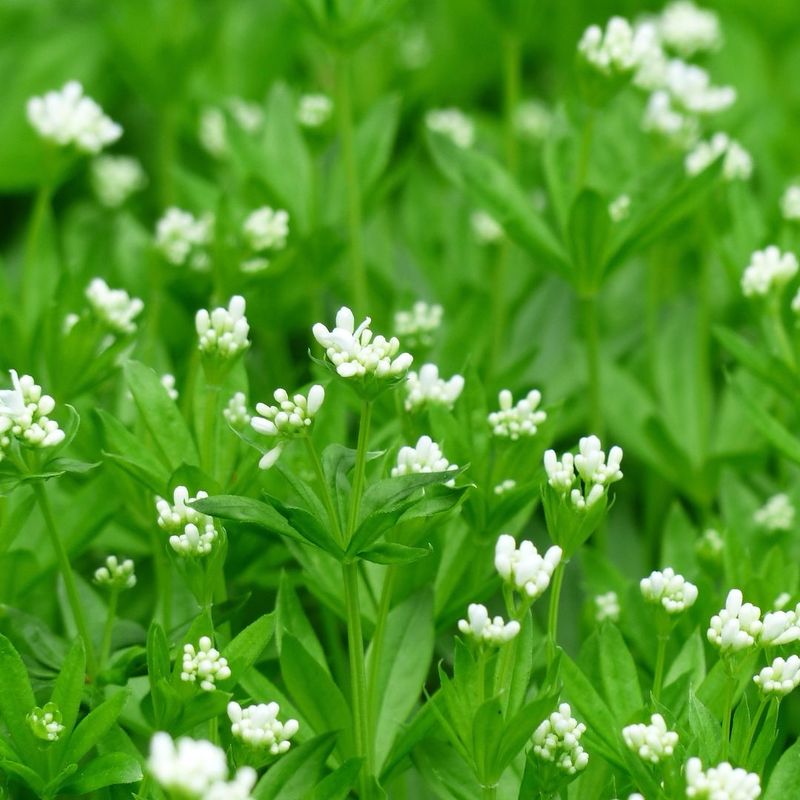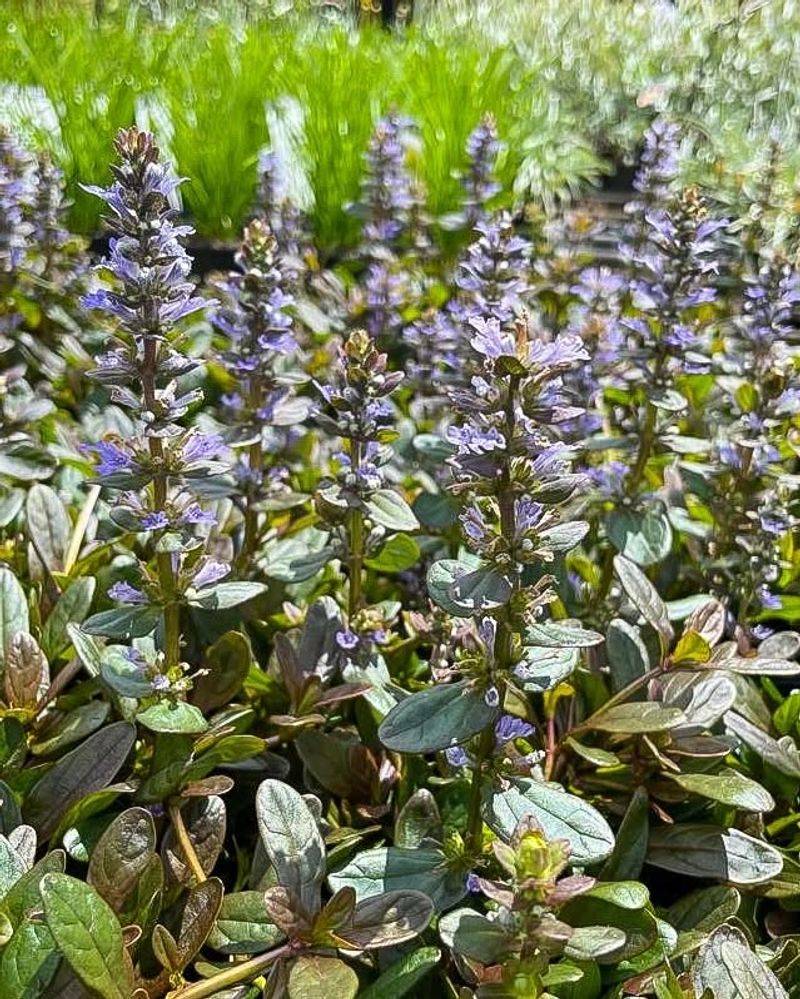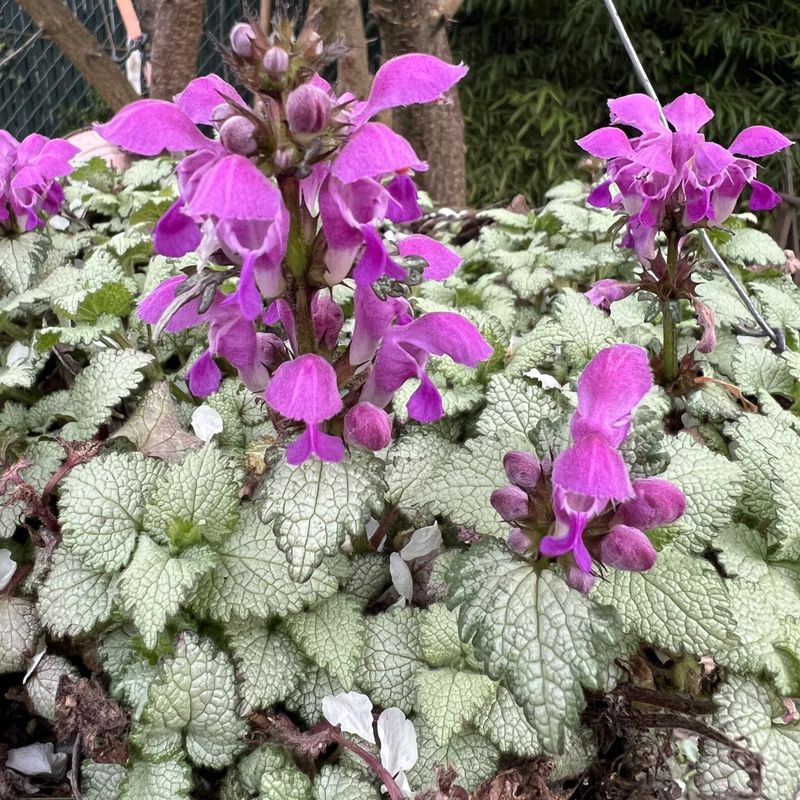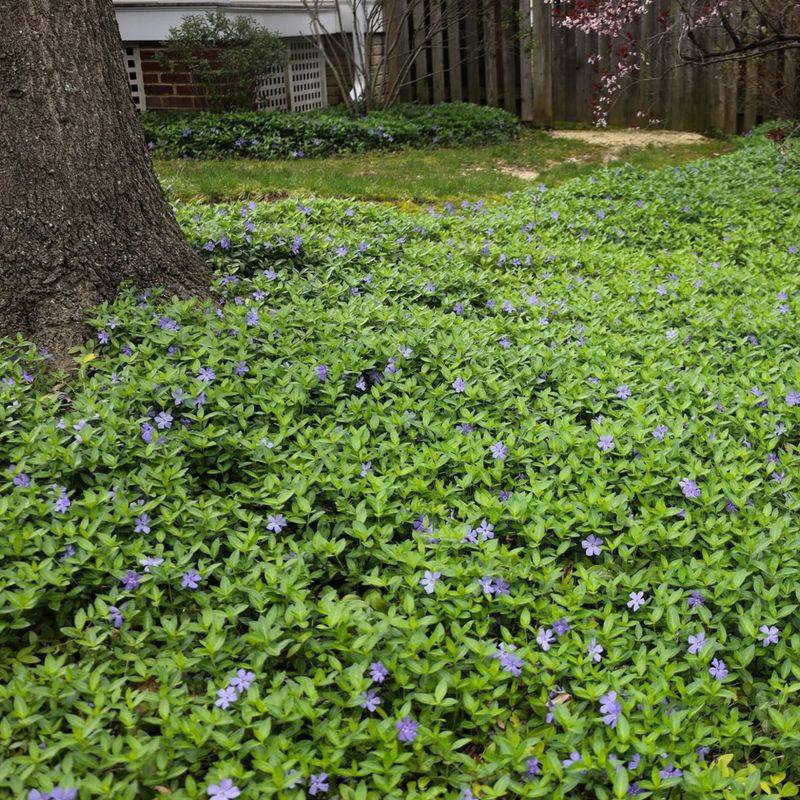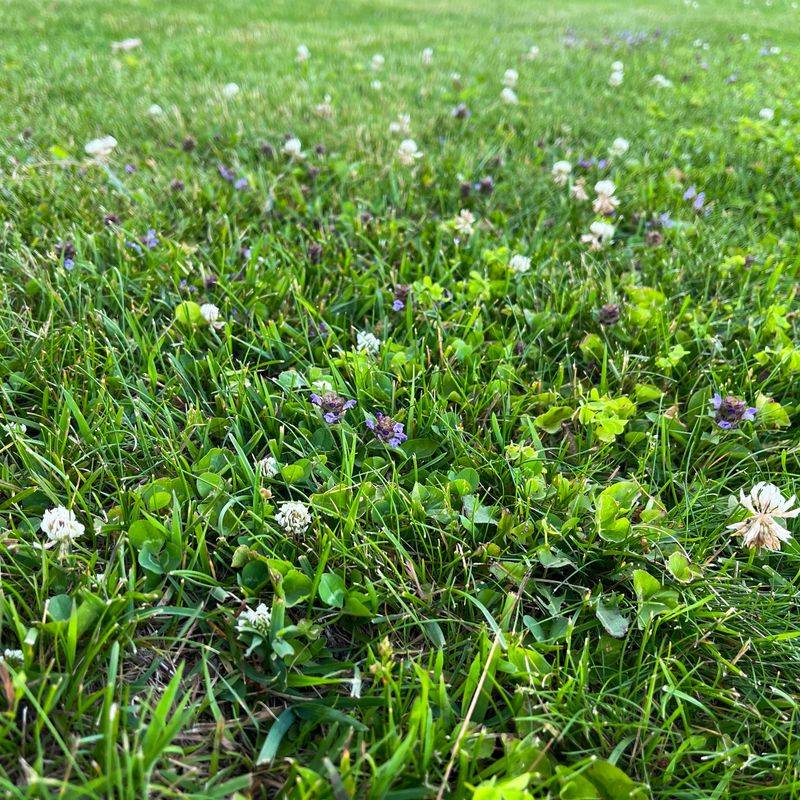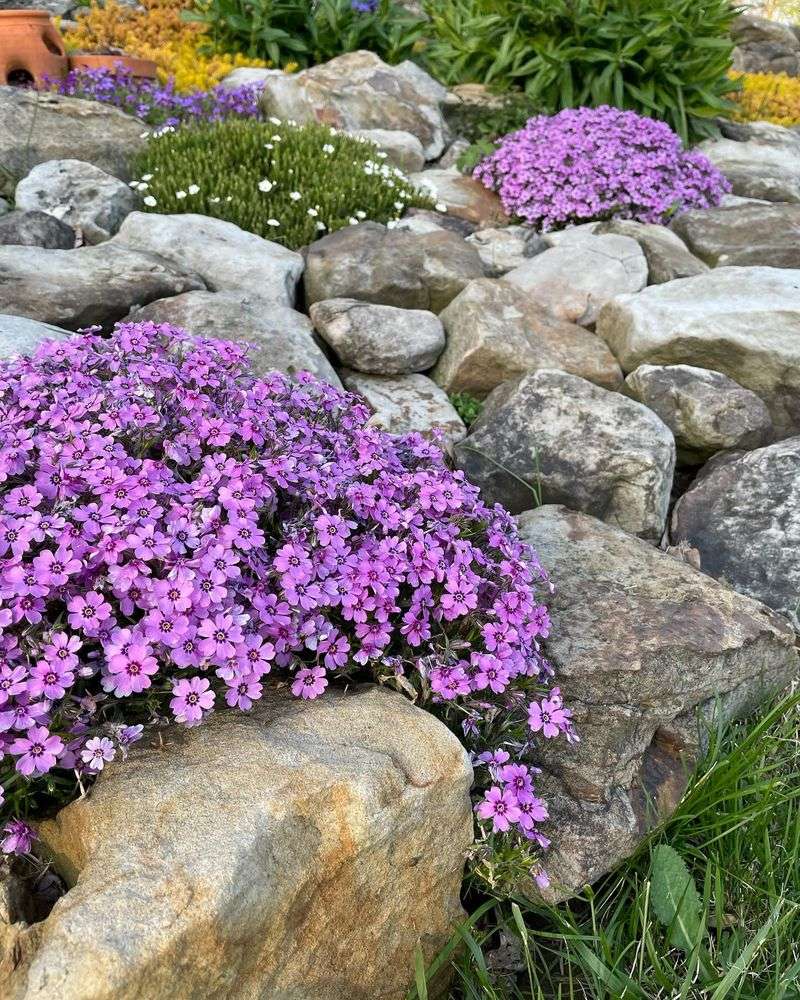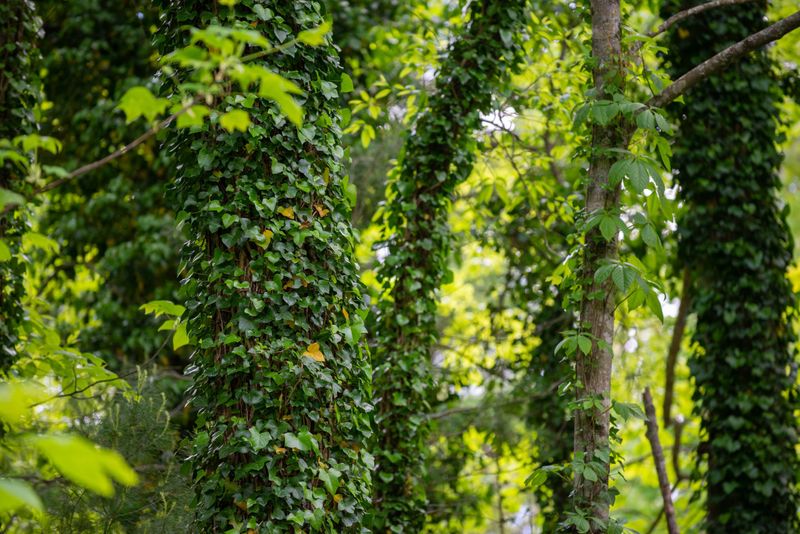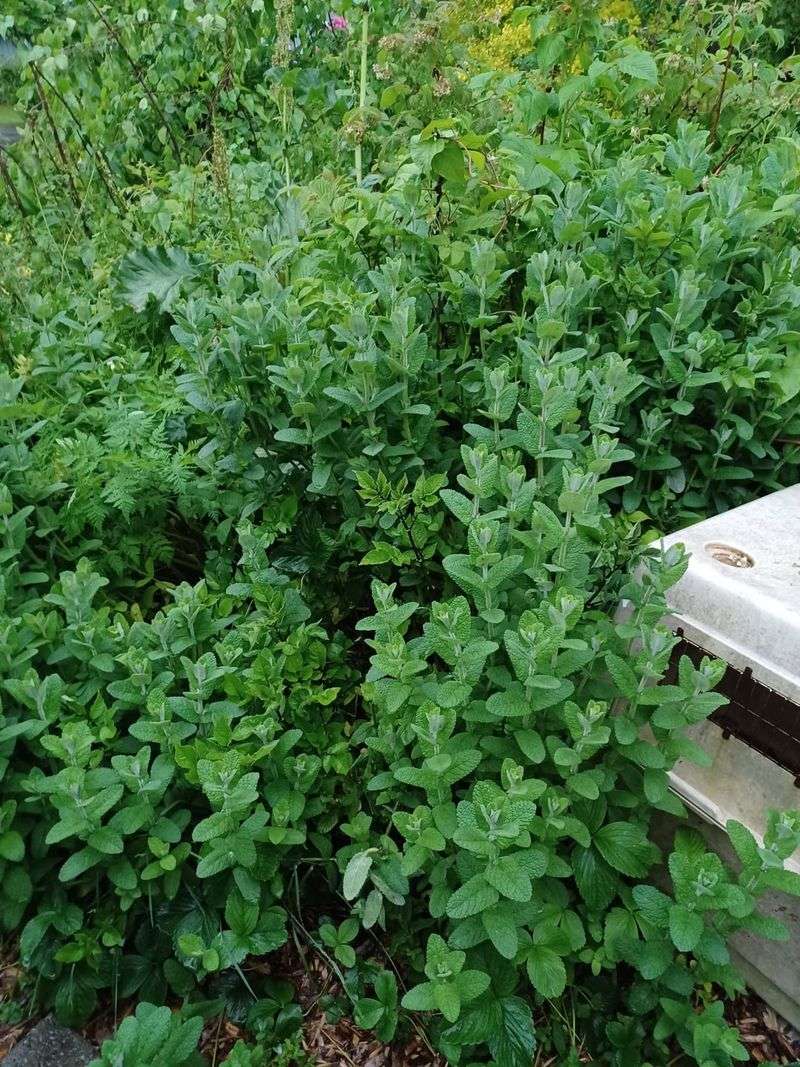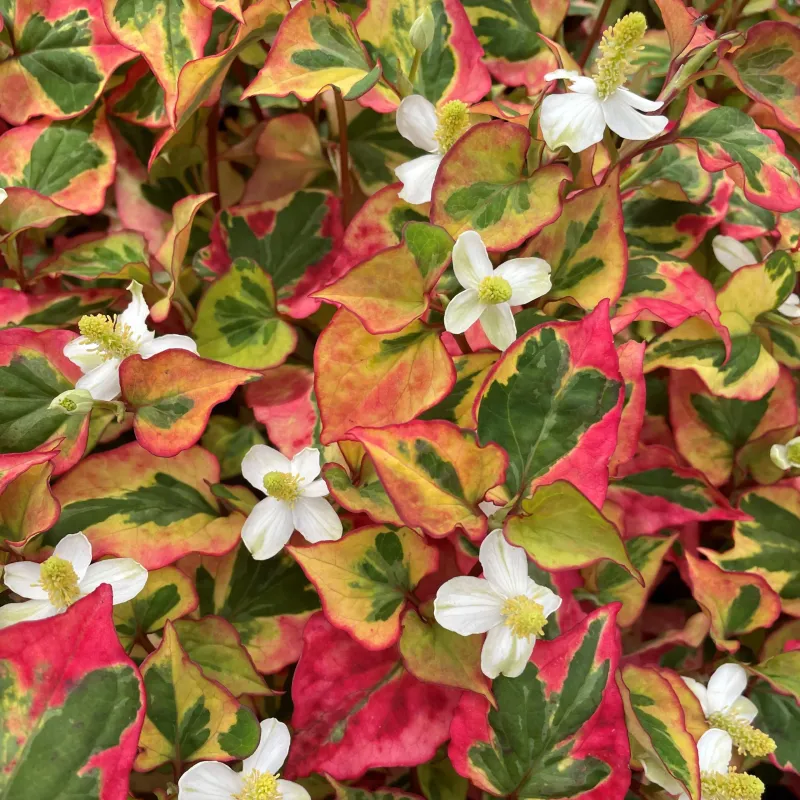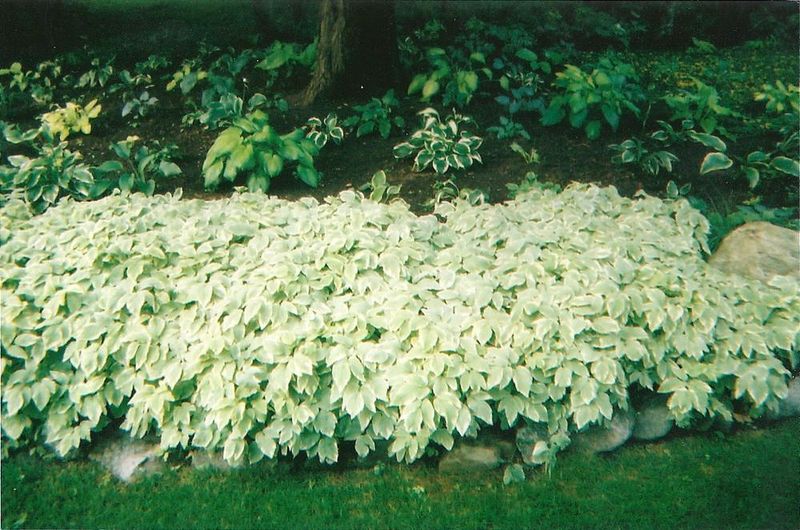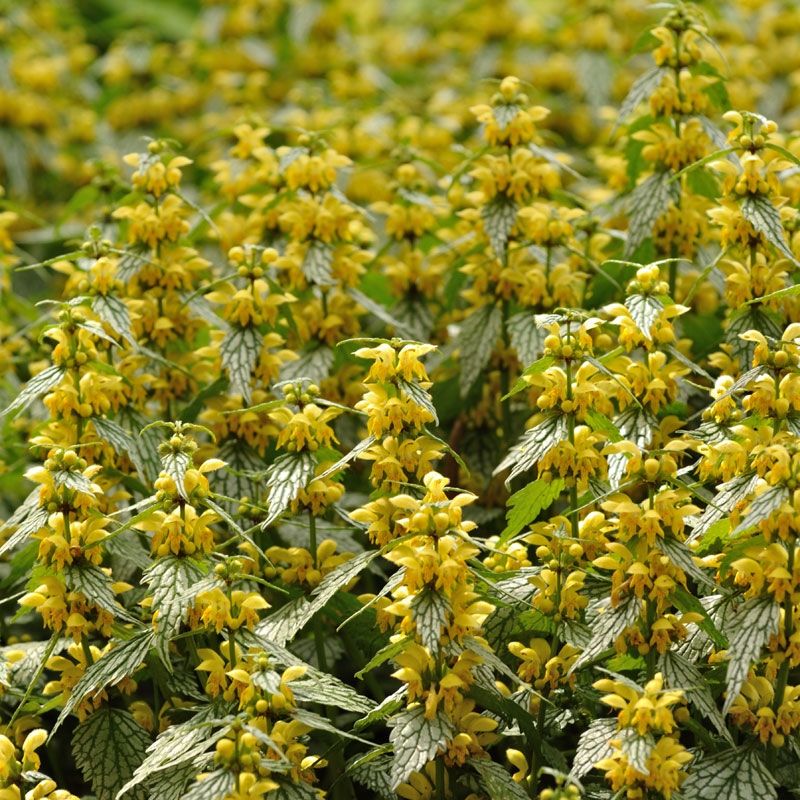Every garden has those tricky bare spots that seem impossible to fill – whether it’s under trees, along pathways, or in shady corners where grass refuses to grow. I’ve spent years battling these eyesores in my own yard, trying everything from mulch to decorative rocks.
Ground covers turned out to be my garden saviors, quickly spreading to fill empty spaces while choking out weeds and adding texture. Some varieties transformed my problem areas in just one growing season, creating a lush carpet where nothing would grow before.
But I’ve learned through painful experience that not all fast-spreading ground covers are garden friends. Some aggressive varieties took over far more territory than I bargained for, creating more headaches than solutions. Here’s my honest take on which spreaders are heroes and which might become garden villains.
1. Creeping Thyme: Nature’s Living Carpet
Walking through my garden on summer mornings, the fragrant aroma of creeping thyme always lifts my spirits. This low-growing perennial creates a dense mat of tiny leaves topped with purple, pink, or white flowers that pollinators absolutely adore.
What makes creeping thyme so perfect is its toughness – it handles light foot traffic, thrives in poor soil, and stays evergreen in mild climates. I’ve used it between stepping stones and along sunny borders where it’s filled in completely within two seasons.
Once established, it barely needs water and actually looks better without fertilizer. For best results, plant it in well-drained soil where it gets at least 6 hours of sun daily.
2. Sedum: The Drought-Defying Spreader
My south-facing slope used to be a barren wasteland until I discovered sedums. These succulent ground covers have fleshy leaves that store water, making them incredibly drought-resistant once established.
Low-growing varieties like ‘Dragon’s Blood’ and ‘Angelina’ spread steadily through shallow roots and fallen stems that re-root wherever they touch soil. In my garden, they’ve created a colorful tapestry that changes with the seasons – bright greens in spring, vibrant flowers in summer, and rich burgundy tones in fall.
Sedums need almost no maintenance beyond occasional thinning. Just give them sharp drainage and plenty of sun, then stand back and watch them transform problem areas.
3. Sweet Woodruff: The Shade Garden Savior
The north side of my house was a muddy mess until sweet woodruff came to the rescue. This dainty-looking plant with whorled leaves and star-shaped white flowers creates a lush green carpet in spots where nothing else seems to grow.
I love how it spreads gradually through underground runners, filling in bare spots without becoming invasive in my region. By late spring, the tiny white flowers create a delicate cloud effect under my maple trees, and the foliage releases a pleasant hay-like scent when crushed.
Sweet woodruff thrives in moist, rich soil and deep shade. I’ve found it pairs beautifully with hostas and ferns for a woodland garden effect that requires minimal maintenance.
4. Creeping Jenny: Sunshine In Plant Form
The golden coins of creeping Jenny’s leaves brighten even the gloomiest corners of my garden. This fast-spreading perennial cascades beautifully over walls and spills from containers, creating dramatic chartreuse waterfalls that catch the eye from across the yard.
I’ve had particular success using it around water features, where it tolerates occasional flooding while softening hard edges. In just one season, small starter plants expanded to cover several square feet through fast-growing stems that root wherever they touch soil.
The ‘Aurea’ variety offers the brightest color in partial shade, though it can scorch in full sun. Regular trimming keeps it looking tidy and prevents it from overwhelming slower-growing neighbors.
5. Ajuga: Blue Blooms For Problem Spots
After watching grass repeatedly fail under my maple tree, I finally surrendered to ajuga (bugleweed). Now that shady spot boasts rosettes of glossy, often colorful foliage topped with stunning blue flower spikes each spring.
Varieties like ‘Black Scallop’ and ‘Chocolate Chip’ offer dramatic foliage in deep burgundy or bronze tones that create year-round interest. I’ve found ajuga particularly useful for erosion control on gentle slopes, where it quickly forms a weed-suppressing mat through runners.
While it spreads enthusiastically, I’ve managed to keep it contained by installing edging and removing unwanted plants in spring. It performs best in rich, moist soil but tolerates a surprising range of conditions once established.
6. Mazus: The Lawn Alternative
When I wanted something more interesting than grass between my garden stepping stones, mazus provided the perfect solution. This low-growing perennial forms a dense mat just 2-3 inches tall, creating a miniature meadow effect with its tiny purple or white snapdragon-like flowers.
Unlike many ground covers, mazus can handle moderate foot traffic while staying remarkably tidy. Its spreading habit is vigorous enough to fill spaces quickly but not so aggressive that it becomes a nuisance – in my experience, it’s been perfectly behaved.
For best results, I’ve found it needs consistent moisture during establishment and performs beautifully in part sun to part shade. By its second year, it formed a solid carpet that needed almost no maintenance.
7. Lamium: Silver Highlights For Shade
The silvery variegated foliage of lamium (dead nettle) brightens the darkest corner of my yard year-round. Each leaf looks hand-painted with a silver wash that catches even the faintest light, making this ground cover especially valuable in dim areas.
Pink or white hooded flowers appear in spring, attracting early pollinators when not much else is blooming. I’ve grown several varieties, but ‘White Nancy’ has proven most reliable, spreading at a manageable pace without becoming weedy.
Lamium performs best in rich, moist soil but tolerates dry shade once established – a rare quality that’s made it invaluable under mature trees. Regular trimming after flowering keeps it looking fresh and encourages dense growth that effectively suppresses weeds.
8. Vinca Minor: The Tough Evergreen Spreader
After years of fighting erosion on a shady slope, I finally met my match with vinca minor (periwinkle). This tough evergreen vine quickly established a dense network of stems and roots that held soil in place through even the heaviest downpours.
Its glossy green leaves create a tidy backdrop for pretty blue-purple flowers that appear in spring and sporadically through summer. I particularly appreciate how it maintains its good looks through drought, poor soil, and neglect – conditions that would kill most plants.
While vinca spreads steadily through runners, I’ve found it stays where I want it with minimal maintenance. A simple trimming in early spring keeps it looking fresh and prevents it from climbing up into shrubs or trees.
9. Clover: The Eco-Friendly Ground Cover
Replacing part of my lawn with white clover turned out to be one of my smartest gardening moves. This nitrogen-fixing plant improves soil health while creating a lush carpet that stays green even during moderate drought when traditional grass turns brown.
I love watching bees and other pollinators visit the white or pink puffball blooms, turning my yard into a biodiversity hotspot. Microclover varieties grow especially low, blending beautifully with traditional turf for a lawn that needs less fertilizer and water.
Unlike many ground covers, clover can be started inexpensively from seed, spreading quickly to fill bare patches. It thrives in full sun to part shade and tolerates moderate foot traffic, making it perfect for natural play areas.
10. Creeping Phlox: Spring’s Flowering Blanket
Nothing announces spring in my garden quite like the vibrant flower display of creeping phlox. For several weeks, this low-growing perennial disappears completely under a blanket of pink, purple, blue, or white star-shaped blooms that stop visitors in their tracks.
I’ve used it extensively along my sunny border edges and on a small slope, where it cascades beautifully over rocks and prevents erosion. Even after flowering, its needle-like evergreen foliage forms an attractive weed-suppressing mat that requires almost no maintenance.
Creeping phlox spreads slowly but steadily, taking about three years to reach full coverage. It performs best in well-drained soil and full sun, though I’ve found it tolerates light afternoon shade in my hot climate.
11. English Ivy: The Aggressive Climber
I made the mistake of planting English ivy along my fence line years ago, thinking it would create an elegant evergreen backdrop. While it certainly filled the space quickly, it soon became clear this plant had no intention of staying put.
The vigorous vines not only covered the ground but climbed trees, infiltrated my house siding, and sent runners far into neighboring beds. Removing it has been a multi-year battle, as even small pieces left behind quickly resprout into new plants.
In many regions, English ivy is considered invasive because it escapes gardens and smothers native vegetation. If you’re determined to use it, consider growing it in containers or installing deep root barriers to contain its spread.
12. Mint: Fragrant But Ferocious
The intoxicating fragrance of mint tempted me to use it as a ground cover in a damp corner of my yard. That seemingly innocent decision led to years of regret as mint runners infiltrated nearby beds, lawn areas, and even cracked pavement.
While mint certainly fulfills the promise of quick coverage, its underground runners (rhizomes) spread relentlessly in all directions. I’ve pulled out plants only to find runners extending six feet or more from the original planting, sprouting new plants along their entire length.
If you love mint, grow it in containers or install it in beds surrounded by deep barriers that extend at least 18 inches down. Even then, inspect regularly for escapees that jump the barrier through seeds or wind-blown fragments.
13. Chameleon Plant: The Colorful Menace
I was seduced by the heart-shaped, colorfully variegated leaves of chameleon plant (Houttuynia cordata ‘Chameleon’) at the garden center. The tag promised quick coverage for a difficult wet area, and it certainly delivered – then kept on delivering far beyond what I wanted.
This aggressive spreader quickly colonized nearby garden beds through underground runners that snap off when pulled, with each fragment capable of starting a new plant. The foliage emits an unpleasant fishy odor when crushed, adding insult to injury during removal attempts.
Despite its attractive foliage, this plant is now on my permanent blacklist. If you’re tempted, consider growing it in a contained water garden where it cannot escape into the landscape.
14. Bishop’s Weed: The Unkillable Invader
When I moved into my current home, I inherited a patch of bishop’s weed (Aegopodium podagraria) that the previous owner had planted as a ground cover. Its pretty variegated leaves seemed harmless enough – until I tried to establish other plants nearby.
This European native quickly revealed its thuggish nature, sending deep, brittle roots throughout the garden that break when pulled and regenerate from the smallest fragments. In just two seasons, it had invaded perennial beds twenty feet away, emerging between established plants where it was nearly impossible to remove.
After multiple eradication attempts spanning years, I’ve resigned myself to containing rather than eliminating it. Save yourself this headache and avoid this plant entirely, regardless of how pretty the variegated form may appear.
15. Yellow Archangel: Beauty Turned Beast
The silver-splashed leaves of yellow archangel (Lamiastrum galeobdolon) caught my eye at a plant swap years ago. Little did I know this seemingly innocent shade-loving ground cover would become my garden nemesis.
While it certainly fulfilled its promise to thrive in dry shade, it quickly jumped beyond its intended boundaries. Its stems root wherever they touch soil, and it also spreads by seeds that birds distribute throughout the landscape. In my woodland garden, it began outcompeting native wildflowers within just two seasons.
In many regions, yellow archangel has escaped gardens to invade natural areas, earning it a spot on noxious weed lists. Its pretty variegation isn’t worth the ecological damage and removal headaches it causes.

